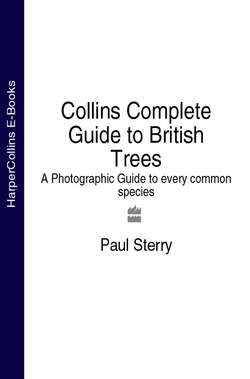Читать книгу Collins Complete Guide to British Trees: A Photographic Guide to every common species - Paul Sterry - Страница 27
CARR WOODLAND
ОглавлениеNature is dynamic, and there is a general trend in all environments for newly created habitats to become colonised by increasingly more stable plant communities. In most locations this progression follows a predictable route and the process itself is referred to as habitat succession.
The impact of succession in wetland habitats is particularly striking. Marginal vegetation soon encroaches upon areas of open water, and silt builds up, gradually reducing water levels. Reeds, bulrushes, sedges and rushes then take hold and open water soon gives way to tussocky ground. The resulting mire is referred to as a fen if the water is neutral to basic or a bog if the ground is acidic. Trees soon begin to appear and those tolerant of waterlogged ground – Alder and various willow species – give rise to a woodland community called carr where once a fen prevailed. Carr is the penultimate stage in the process of succession, which leads eventually to the formation of dry land and a climax community of Oak and Ash.
Carr woodland is not the easiest of plant communities to explore and, unless the area in question is a boardwalked nature reserve, wet feet are inevitable. However, such areas are usually botanically rewarding. Insect life usually abounds too, particularly in the form of midges and mosquitoes.
The damp environment with which Alder carr is associated allows ferns and mosses to thrive in abundance.
